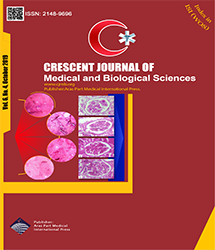
| Original Article | |
| The Relationship Between the Type of Delivery and Sexual Function in Mothers Referring to Kourdistan (Sanandaj) Health Centers in 2015-2016 | |
| Marzieh Moghadam1, Farzaneh Zaheri2, Narges Shams Alizadeh1, Siroos Shahsavari3 | |
| 1Department of Psychiatry and Behavioral Sciences, Neurosciences Research Center, Faculty of Medicine, Kurdistan University of Medical Sciences, Sanandaj, Iran 2Clinical Care Research Center, Research Institute for Health Development, Kurdistan University of Medical Sciences, Sanandaj, Iran 3Health Faculty of Sananadj, Kurdistan University of Medical Sciences, Sanandaj, Iran |
|
|
CJMB 2019; 6: 473–480 Viewed : 4712 times Downloaded : 2909 times. Keywords : Mode of delivery, Sexual dysfunction, Cesarean section, Episiotomy |
|
| Full Text(PDF) | Related Articles | |
| Abstract | |
Objectives:Sexual dysfunction is one of the most serious problems that may occur in the postpartum period and can lead to physical, psychological, and social adverse effects in women. The type of delivery is one of the factors that may affect the prevalence of sexual disorders in this period. The present study evaluated the relationship between the mode of delivery Materials and Methods: The participants of this cohort study included all nulliparous mothers aged 18 to 35 years, who referred to healthcare centers in Sanandaj, the capital city of Kurdistan province, Iran. The sample size for the vaginal delivery with episiotomy and cesarean section (C-section) was 68 women. Sexual function was evaluated using the Female Results: There was no signifcant difference between the two groups before pregnancy regarding women’s sexual function (P=0.9) while both types of deliveries resulted in a signifcant reduction in sexual function 6 months after the childbirth. In addition, vaginal delivery reduced sexual function more than C-section. The mean scores of sexual function were 24.4 for Conclusions: Overall, sexual function in the C-section group was better than the vaginal delivery group 6 months after the delivery. However, this difference was only signifcant in the domain of sexual desire one year after the childbirth. |
Cite By, Google Scholar
Google Scholar
PubMed
Online Submission System
 CJMB ENDNOTE ® Style
CJMB ENDNOTE ® Style
 Tutorials
Tutorials
 Publication Charge
Medical and Biological Research Center
About Journal
Publication Charge
Medical and Biological Research Center
About Journal
Aras Part Medical International Press Editor-in-Chief
Arash Khaki
Deputy Editor
Zafer Akan


















